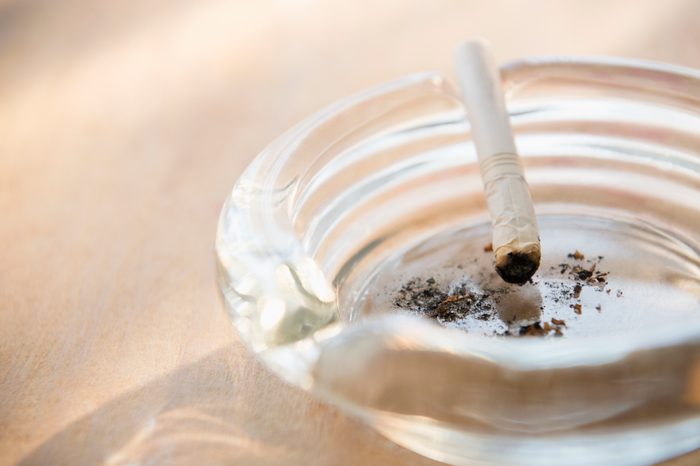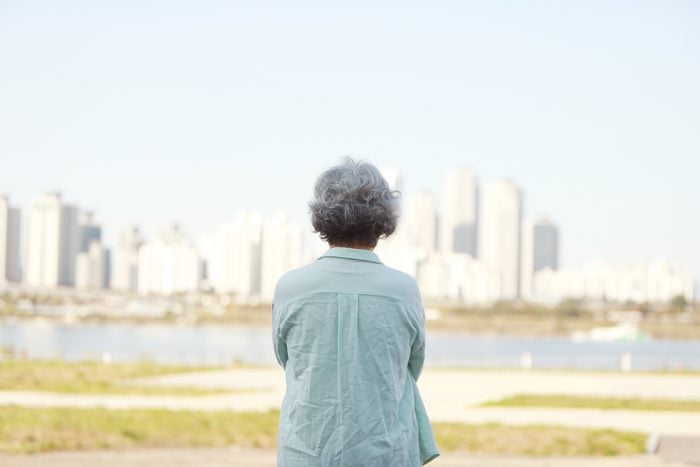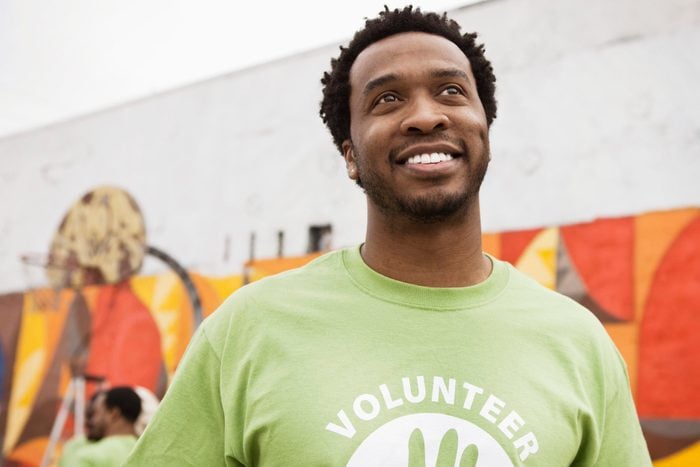The behaviors and factors that threaten longevity
Most people hope for a long, healthy life. For those who desire a few more quality trips around the sun, researchers across many disciplines are continually seeking new information on ways to extend the human life span. In a 2020 study published in the journal Proceedings of the National Academy of Sciences (PNAS), researchers examined a wide variety of risk factors related to life expectancy. They identified 57 social and behavioral elements that contribute to an increase in early mortality in the U.S.
They ultimately pinpointed six factors that have the most impact: smoking, alcohol abuse, lack of physical activity, economic/financial difficulties, social adversity, and negative psychological characteristics. The researchers say these predictors can be used to understand individual mortality risk.
“We need to step back and look at why the United States is doing so poorly in terms of life expectancy [versus] other comparable countries,” says study co-author David Rehkopf, associate professor of medicine at Stanford University. “What you are doing right now matters for your health, it is never too late to begin to be healthy.”
The study, which was based on 13,611 adults ages 50 to 104 who died between 2008 and 2014, didn’t analyze every possible adverse component, but the data do give an indication of specific childhood and adulthood factors associated with a reduced life span. “Social factors and conditions come out as important for mortality, and they are factors that we should pay more attention to,” Rehkopf says.
A healthy life expectancy is defined as the number of years a person at a given age can expect to live in good health. To that end, we spoke with experts in each of the six main categories to determine potential interventions and solutions in order for people to live their longest, healthiest lives.

Smoking
According to the PNAS study, current smokers and those with a history of smoking had the greatest risk of early mortality. The latest data on smoking from the Centers for Disease Control and Prevention (CDC) support this finding on a grand scale: Smoking cigarettes causes over 480,000 deaths per year in the U.S., including more than 41,000 deaths due to secondhand smoke. Smokers die approximately 10 years sooner than non-smokers. The high concentration of nicotine in cigarettes drives an addiction in the brain that has a massive impact on the lungs and heart. Smoking not only causes lung damage, it weakens the immune system, causing further infections.
“The chemicals in cigarettes result in a constant attack on the lungs,” says Panagis Galiatsatos, MD, assistant professor at Johns Hopkins School of Medicine and a pulmonary and critical care doctor. In addition to cancer, smoking can cause many interstitial lung diseases (ILD), including respiratory bronchiolitis (RBILD) and pulmonary langerhans interstitial lung disease (PLCH), as well as chronic obstructive pulmonary disease (COPD) (which includes emphysema), and pneumonia. “If people who actively smoke get a viral or bacterial infection, they have a lot more severe symptoms,” says Dr. Galiatsatos. “SARS-CoV-2 and Covid-19 are worse in people who smoke.”

Smoking: What you can do
Dr. Galiatsatos, who is also a national spokesperson for the American Lung Association, says that he keeps the definition of a smoker simple: “Either you smoke or you don’t.” Severity depends on a brand’s nicotine and tar concentrations, the burn rate, and whether a smoker deeply inhales or gets just a few puffs in before putting it down. “People ask, ‘Am I a mild, moderate or super smoker?’ I don’t know. It’s the way your body responds,” says Dr. Galiatsatos. “It’s like playing Russian roulette. Every time you do it, you expose yourself to dire outcomes. You may smoke once a week; that can still result in cancer. Someone else may have the genetics that even if they smoke daily, they won’t get cancer. You don’t want to play those odds.”
(Smoking marijuana or e-cigarettes may pose the same risks around infection and cancer development. Although, infection and cancer risk around these two types of smoking are controversial. More research is needed as some studies have found that marijuana lessens cancer development, per the International Journal of Cancer.)
Dr. Galiatsatos says dependence on tobacco is a disease “no different from diabetes … you have to manage it.” As the co-author of new guidelines for smoking cessation, he recommends smokers first surround themselves with people who can empathize. Second, they should talk to a healthcare professional to determine if medical intervention is necessary. Finally, understand that quitting takes time.
“The nicotine replacement therapy patch, Wellbutrin (generic name bupropion) and Chantix (varenicline) — these medications work, but all have a variable impact of when they’ll work.” Generally, a former smoker is someone who has established six months or more without smoking, while independence is 10 years of not smoking.

Alcohol abuse
Alcohol abuse is one of the leading causes of preventable death in the U.S. The National Institute on Alcohol Abuse and Alcoholism reports an estimated 88,000 people (approx. 62,000 men and 26,000 women) die from alcohol-related causes annually. The CDC estimates more than 100,000 people died from alcohol-related causes every year. George Koob, director of the National Institute on Alcohol Abuse and Alcoholism (NIAAA), says there are around 200 types of disorders and injuries that alcohol has a role in which can cause death, as reported by the World Health Organization (WHO).
“Even indirectly, people lose their lives due to alcohol. Of the 10,000 people who died in traffic alcohol-related accidents in 2018, only 60 percent of them were alcohol-impaired drivers,” says Koob. “It’s often the passenger or the person in the other vehicle. Alcohol, when misused is a toxin, both behaviorally and physiologically.” Beyond intoxication-related accidents and injury, alcohol also increases the risk of cirrhosis, liver disease, and cancer of the liver, larynx, pharynx, esophagus, and breast in women.

Alcohol abuse: What you can do
John F. Kelly, professor of psychiatry at Harvard Medical School and director of Massachusetts General Hospital Recovery Research Institute, defines alcohol use disorder as “a condition characterized by heavy and frequent use of alcohol, resulting in impaired ability to successfully cut down or stop alcohol use despite physical, psychological and social problems caused by its use.” He recommends free resources that can help those who struggle with alcohol, including Alcoholics Anonymous, as well as SMART Recovery and Women for Sobriety. Additionally, Koob notes that alcohol abuse is a spectrum disorder, meaning a patient may have a mild, moderate, or severe disorder depending on the number of criteria they meet as diagnosed by the DSM-5 (Diagnostic and Statistical Manual of Mental Disorders).
Due to the social isolation related to the Covid-19 pandemic, Koob says many people will use alcohol to cope with daily stress, to help sleep, or to deal with trauma. He suggests some ways to help ease stress right now instead: keeping a regular sleep schedule, exercise, proper nutrition, and social interaction (even virtually, like Zoom and phone calls). “Exercise is really good for your brain and for your mental health. There are plenty of videos online for different kinds of exercise programs. Walking is very good exercise. Walk the dog a lot,” says Koob.

Physical inactivity
Across the U.S., about 1 in 7 adults are physically inactive, according to a survey conducted by the CDC and state health departments. A 2018 CDC study found that a significant portion of deaths among adults aged 40-69 years (9.9 percent) and adults over 70 (7.8 percent) can be attributed to physical inactivity; approximately 3.2 million deaths globally each year are attributable to physical inactivity according to the World Health Organization (WHO).
Eudene Harry, MD, medical director for Oasis Wellness and Rejuvenation Center who is board certified in both emergency and holistic integrative medicine, defines physical activity as “moving your body with enough force to supply blood, oxygen, and nutrients to every organ system in the body to help them function at optimal capacity.”
To reduce risk of chronic illnesses, basic activity recommendations start at 150 minutes of moderate-intensity exercise per week per the American Heart Association. This includes brisk walking, swimming, dancing, or cycling. Dr. Harry says a lack of physical activity has the potential to impact the entire body, “from the brain to the bones and every gastrointestinal system.”
Dr. Harry emphasizes that prolonged sitting is linked to an increased risk of obesity, high blood pressure, heart disease, and type 2 diabetes, and many more chronic conditions that may increase the risk of premature death. Other potentially lethal conditions related to physical inactivity include osteopenia (loss of bone mass), sarcopenia (excessive muscle loss), hip fractures (which carry an increased rate of mortality for older adults), depression, dementia, and stroke.

Physical inactivity: What you can do
People should stop thinking about exercise as only a means to weight loss and instead see it as one of the most effective health tools available, says Dr. Harry. Physical activity can help manage depression, anxiety symptoms, and stress. “Exercise generates feel-good neurotransmitters such as serotonin, oxytocin and has been shown to increase BDNF (brain derived neurotrophic factor), which has been linked to a decreased risk of depression and maintaining healthy brain cells,” says Dr. Harry. She recommends exercising to improve mood, enhance brain function, and lower blood pressure. Just 20 minutes of aerobic exercise immediately lowers blood pressure (and keeps it lower for 22 hours).
Dr. Harry says people tend to be more consistent with exercise when they think of it as part of a healthy lifestyle, not just for weight management. “I love the term ‘physical activity’ vs. exercise. For many, exercise implies obligation and rigidity. We may feel that if we can’t commit 45 to 60 continuous minutes, why bother? The good news is research tells us 10-minute increments work, getting up every 30 minutes just to move around works.”
She highlights pleasurable activities such as gardening, biking, and hiking. Dr. Harry also reminds us that children love to play, “so let’s call [exercise] playing. Children look forward to the word ‘recess,’ but dread the words ‘physical education.'” While a high antioxidant diet, meditation, and a good night’s sleep all have some benefits similar to physical activity, Dr. Harry says “there is no good alternative, right now, for staying physically active.”

Economic and financial difficulties
Financial stress can affect anyone, regardless of individual wealth—although obviously that stress is greater for some people than others. A 2014 study published in BMC Public Health looked at financial stress in late adulthood. Researchers found that an individual’s financial well-being, which includes lower wealth, unemployment history and reported financial difficulties, may increase the risks of cardiovascular disease and all-cause mortality, particularly among men.
Stephanie W. Mackara, financial socialization expert and president of Charleston Investment Advisors, LLC, defines financial stress as “a state of being where you lack control over your day to day, month to month finances. You are not in a position [to] absorb a financial shock and have constant worry over paying bills and sustaining your lifestyle.”
Mackara says that nearly everyone stresses about whether they’ve saved enough, invested wisely, losing their nest egg, or outliving their money. Job loss is another major stressor, especially during the pandemic. Worrying about having the financial resources to go months without income is overwhelming for many individuals and families. “Those who’ve experienced lower wealth since childhood often don’t have a fall-back plan or financial buffer, so the impact can be much more devastating,” says Mackara. The stock market is yet another source of stress for many, especially in uncertain times.

Financial difficulties: What you can do
While you can’t always control the factors that determine whether or not you have financial problems, engaging children in “positive financial socialization early and often” may help with future financial wellness in the next generation, according to Mackara. A study published in 2018 in the Journal of Financial Counseling and Planning found that children with bank accounts and those whose spending was monitored by parents were “more likely to own financial assets and had more positive attitudes toward personal finance as young adults.”
Likewise, research published in 2018 in Cogent Social Sciences suggests both parental teaching and personal finance classes were associated with positive financial behaviors of college students. “Financial wellness is not separate from a person’s overall well-being,” says Mackara. “We must begin to incorporate all aspects of well-being into our daily lives: emotional, social, physical, and financial in order to optimize our personal health. Money tends to be a touchy subject. We need a perspective shift; financial well-being is inextricably intertwined with our overall health.”

Social adversity
Adverse socioeconomic and psychosocial experiences during childhood, as well as divorce and social connection are all factors investigated by the new PNAS study. The National Institutes of Health Office of Behavioral and Social Sciences designates both behavioral and social sciences as “fundamental to our understanding of disease pathogenesis and mortality.” David L. Hill, MD, adjunct assistant professor of pediatrics at University of North Carolina School of Medicine and co-author of Co-parenting Through Separation and Divorce: Putting Your Children First, says negative social experiences are termed “adverse childhood events” (ACEs) in pediatrics.
Adverse events, including being a victim of physical abuse, sexual abuse, emotional abuse, physical or emotional neglect, witnessing household domestic violence, substance abuse, mental illness, parental incarceration, separation or divorce, experiencing racism, and poverty all cause stress and may have lifelong consequences for both mental and physical health.
Dr. Hill says toxic stress “causes the prolonged release of stress hormones, including cortisol, that can ultimately damage the DNA in our cells through a chemical process called methylation. Methylation turns genes on and off, and many researchers believe that these changes underlie the remarkable decreases in life expectancy related to toxic stress.”

Social adversity: What you can do
Again, many of these factors may be outside of your control. However, certain “resilience factors” can help shield children from adversity. “When we look at children who seem to be better than predicted in dealing with toxic stress, we almost always find a positive, supportive relationship with a safe, secure and loving adult,” says Dr. Hill.
Childhood trauma can affect the way people view relationships and how they connect to others into adulthood, according to Caroline Maguire, a personal coach who works with kids. “When children have positive relationships with their family and important figures in their lives, it allows them to have trust and intimacy in their adult relationships,” says Maguire. “Our ability to connect with others begins in early childhood. Schools, clubs, churches, youth and community organizations, neighborhood and family connections [help children] to connect as adults.”
She recommends therapy with a professional to work through trauma, volunteering, and bonding with a pet, among other suggestions, for dealing with adversity. According to Dr. Hill, equitable school programs, supplemental nutrition assistance, visiting nurse partnerships for pregnant and new mothers, and a program called Reach Out and Read can all help families. He also says the positive parenting movement is helpful, as it replaces punishment with reward, structure, and a system for helping children regulate their own emotions and behavior.

A negative outlook
Although health behaviors have received the majority of attention in scientific literature, some studies have found that your mental outlook on the world can impact your lifespan. Emotions such as anger, contempt, disgust, guilt, and fear—collectively referred to as negative affect—can rob years; so can a poor self-image, and dissatisfaction with life. Persistent feelings of anxiousness, tension, and moodiness can also, as well as lower conscientiousness.
One study published in 2013 in the American Journal of Epidemiology found low conscientiousness (a catch-all term that included a tendency to give up easily, a lack of self-control, and poor long-term planning) was associated with elevated mortality. Other studies suggest that neuroticism might protect against earlier mortality; people who rank higher in that trait may be more vigilant about their health and seek medical advice more readily than others, which could result in a greater likelihood of survival from cancer, cardiovascular disease, and respiratory disease.

A negative outlook: What you can do
Angele Close, a clinical psychologist and emotion-focused therapist, says that social support and the ability to reach out to others often comes up as a key variable in longevity and satisfaction in life. “Willingness to open up to others and share about one’s struggles, which feels vulnerable for many people, is an important determinant in one’s mental health throughout the life span, particularly in later years,” says Close. “Flexibility and emotional resilience are also important. Rigidity in one’s views and needing things to be a certain way can create suffering and stress; most things in life are temporary and impermanent.”
She suggests kindness, caring, and being of service, including volunteering, as important for one’s psychological state and mood. However, self-sacrifice can also lead to negative affect, resentment or feeling burdened over time.
“Caring for others, including people, animals, and causes, must also be balanced with setting healthy boundaries,” she says. Even children with more anxious temperaments and those who’ve been exposed to trauma can learn strategies to help override default negative views of the world. Close says getting adequate sleep, eating nutrient-rich foods, limiting or omitting alcohol, drugs and other substances, regular exercise, mindfulness meditation, prayer, self-compassion exercises, social support, and working with a therapist have all been shown to help build emotional resilience, cope better with daily stress, and experience greater satisfaction in life.

